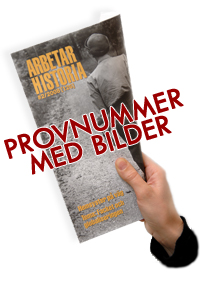Abstracts for issue no 137
»Hvor er der dogmange boliger i dette helvede.« Harriet Martineaus Charleston /Stephen Keck
ABSTRACT »How Many Mansions There Are In This Hell«: Harriet Martineau’s Charleston This article explores political travel by first tracing Harriet Martineau’s visit to Charleston in 1835. Martineau arrived as an established writer and she was taken to meet many of the key figures in Charleston society. In Retrospect on Western Travel (1838) Martineau blasted Charleston and more generally the American South for the practice of slavery. However, nearly two decades laterWilliam Gilmore Simms, writing as a southern nationalist, used Martineau’s criticisms of the south for his own political purposes. In »The Morality of Slavery« Simms drew upon Martineau as an example of travel writing which was hostile to the South. Martineau’s visit, then, proved to be political in at least two ways: because it provided firsthand look at slavery in the Charleston the journey became the basis for a critique of the region; subsequently, the event itself proved to be a source for an ideological response which appealed to Southern identity.
Att modernisera Orienten Ludvig Nordströms reportage från Turkiet 1928 / Peter Forsgren
ABSTRACT Modernizing the Orient The article analyzes the ideas behind Världs-Sverge, the reportage from Turkey published in 1928 by the Swedish novelist and journalist Ludvig Nordström (1882– 1942). In particular, the article considers how Nordström interprets the Turkish process of modernization and in what ways this interpretation is related to his general ideas of global modernization. Nordström’s reportage is based on one key rhetorical figure, the contrast between the former capital Istanbul and the modern one, Ankara. The contrast between the two cities is described as a contrast between traditional and modern society, the »Orient» and the »Occident», and this dichotomy is further underlined by other related dichotomies, such as »sexualism» versus »intellectualism». Istanbul is characterized by lack of energy and will, while the opposite goes for Ankara. By this comparison Ludvig Nordström connects to an established tradition of European »Orientalism ». Edward Said’s theories about »Orientalism» are used as analytical tools in the article and the analysis is also related to recent research on Swedish forms of »Orientalism» during the late 19th and early 20th centuries.
Revolution och känslor Svenska radikala turister på Kuba under 1960- och början av 1970-talet / Charlotte Tornbjer
ABSTRACT Revolution and emotions. Swedish radical tourists in Cuba during the 1960s and the beginning of the 1970s How do emotions influence political interests? In this article the author analyses Swedish radical tourists travelling to Cuba during the 1960s and the beginning of the 1970s. The travellers were all very fascinated by the emotional commitment to the revolution that they saw among the Cubans. They saw the dancing and the music as an integrated part of the revolution. The early tourists felt themselves to be witnesses to the revolution and they experienced this commitment as a positive force. The visitors at the end of the 1960s and 1970s, however, more often identified themselves with the revolution, but even this group found another emotional community in revolutionary Cuba. And even if emotions were not always seen as something positive in the political debate, it is obvious that among these wholeheartedly radical tourists their emotional experiences influenced their attitudes to the Cuban revolution.
Cuba og Vietnam som symbolske og konkrete utopier Danske solidaritetsrejser i 1960’erne og 1970’erne / Karen Steller Bjerregaard
ABSTRACT Cuba and Vietnam as symbolic and concrete utopias: Danish solidarity trips in the 1960s and 1970s In the 1960s and 1970s both Cuba and Vietnam were important pivotal points in a revolutionary enthusiasm in the solidarity work in Denmark, which saw the third world as the spearhead in the fight against imperialism. At the same time, as the solidarity trips reveal, there were quite different political and cultural aspects to be attracted to and identify with in the two countries. Cuba appeared as the warm, dynamic, comradely and concrete revolution, while Vietnam was experienced as a delicate and distant country with a very exotic people whose fight had great symbolic value. The article shows both the great difference in the scale of the trips, the manner in which the activists travelled and the importance they were accorded. Journeys to Cuba were a common occurrence, where many groups were constantly setting off as work brigades, and the trips had enormous significance for Cuban solidarity work as such. In comparison, the journeys to Vietnam, were few in number and primarily took the form of trips by delegations which did not play a great role in the solidarity work – especially not for the activist part of the Vietnam movement. Solidarity trips were interpreted as giving a meaning to a form of praxis, and helped fill out the content of the phenomenon of solidarity with the third world that was a part of the youth and student unrest and the article indicates that it should be understood as something particularly complex.
Inter-nationell solidaritet Politiska resor och globala relationers dilemman /Linda Berg
ABSTRACT Inter-national Solidarity. On the dilemma of site affinities After the Sandinista revolution in 1979, there was comprehensive Swedish support to Nicaragua. The large number of volunteers, brigade-workers and other helping hands constructed a special image of Swedish solidarity workers. Common for most of them was their critique of the structures that placed themselves and others in hierarchical positions. It was a struggle often from the place of the privileged, a space connected to freedom and guilt. During the time in Nicaragua the relationships between the Swedes and the Nicaraguans were based on their common experiences and attempts to undermine the inequality between them.While living in Nicaragua, the solidarity workers experienced everyday exchanges, while after the trip, back in Sweden, the boundaries of social class and geopolitical belonging became painfully clear, obvious evidence of an extremely unjust world.
Att resa i politikens namn De svenska och finländska landsorganisationernas resor under mellankrigstiden / Jenny Jansson och Mira Österberg
ABSTRACT Travelling in the name of politics This article focuses on the political journeys of Swedish and Finnish trade unions in the 1920s and 1930s. At a time when the means for exchanging information were few, travelling was an important way of spreading ideas. The journeys aimed to gather knowledge on how to build strong trade unions and on social legislation.We argue that because of the different political contexts in Sweden and Finland an asymmetrical relationship between the two labour movements developed. The Swedish Trade Union Confederation (LO), comparably wealthy and united, could afford study tours to several European countries. LO’s support to weaker trade unions gave them a leading position among trade unions in Europe. The Finnish central organisation for trade unions (SAJ 1907–1930, FFC 1930–) on the other hand, had to struggle with economic difficulties and at the same time fight the communist wing of the labour movement. These circumstances became crucial for the goals of SAJ’s/FFC’s political journeys and turned their interest toward their Scandinavian neighbours for support and information.
Kursist på den Internationale Leninskole 1958-60 / Chris Holmsted Larsen
ABSTRACT A participant/student at the International Lenin School, 1958–60 During the ColdWar thousands of cadres from the Moscow-loyal communist parties of the Scandinavian countries were trained at special schools and course-facilities in the Soviet Union and the Eastern Bloc countries. One of the most important of these institutions was the International Lenin School, which provided ideological and organizational training for primarily leading European and American communist cadres from 1926 to 1938 and again during the ColdWar. The leading Danish communist Otto Sand was among these trainees. Through a micro-historical inspired approach, his letters to family and friends, and likewise the correspondence between him and the Danish Communist Party (DKP), this article tries to describe the everyday life and travelling experiences of a Scandinavian communist in the heart of the Soviet empire. Furthermore, this analysis is combined with existing research on political tourism and a tentative conclusion regarding the ideological and organizational effect of this training is provided. Otto Sand, who later became a leading figure in the Danish Vietnam Movement, lived together with his family in Moscow from 1958 to 1960.
GoWest –Ungkommunister fra Sovjetunionen og Østeuropa på besøg i Danmark / Knud Holt Nielsen
ABSTRACT Go West – Young Communists from the Soviet Union and Eastern Europe on a visit to Denmark During the ColdWar political tourism was a particularly important part of the international work undertaken by the communist youth leagues and helped in the development of the political identity of communists. Taking, as a point of departure, the Danish Communist Youth League`s collaborative activities with the communist youth organizations in the USSR and Eastern Europe a picture is drawn of how things unfolded when young communists from the USSR and the GDR went on political (tourist) trips to Denmark in the 1970s and 1980s. The article discusses the notable similarities between the excursions to the East by young Danish communists and trips westwards by young Eastern European communists.While the state-run communist youth organizations in the East, for example, staged an »imaginary communism» characterized by progress and popular backing, the Danish communists presented a kind of »imaginary communist movement» in Denmark. The aim was to give the visiting young communists from the East an impression of Danish society where the prevalence and importance of communists was greatly exaggerated, something which Danish communists succeeded in achieving to a great extent.


